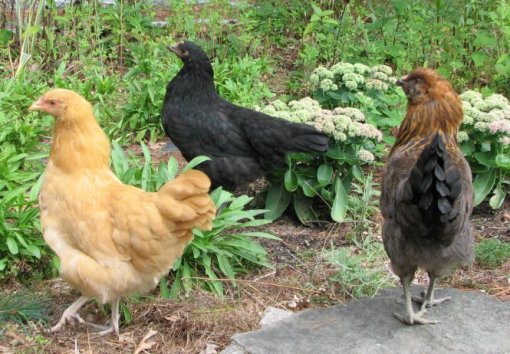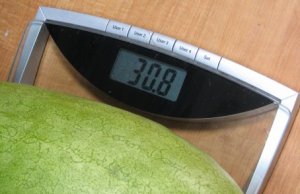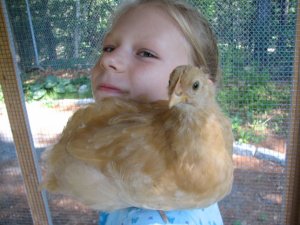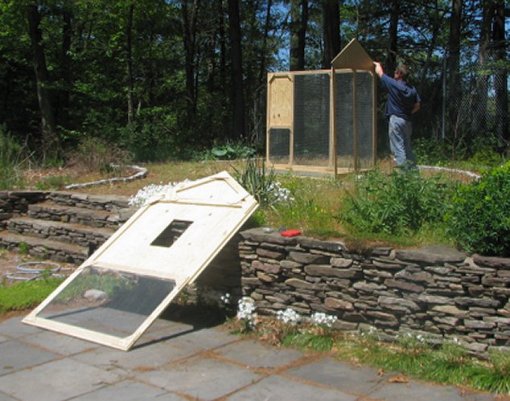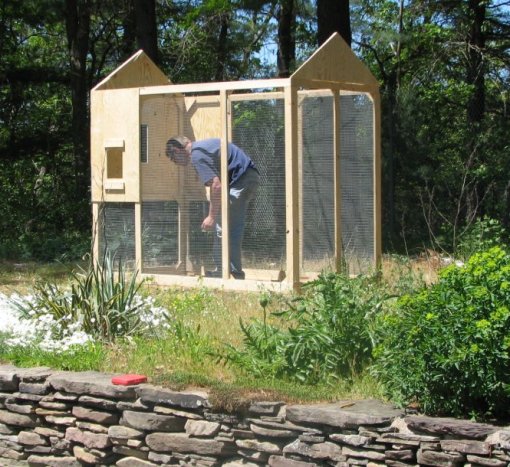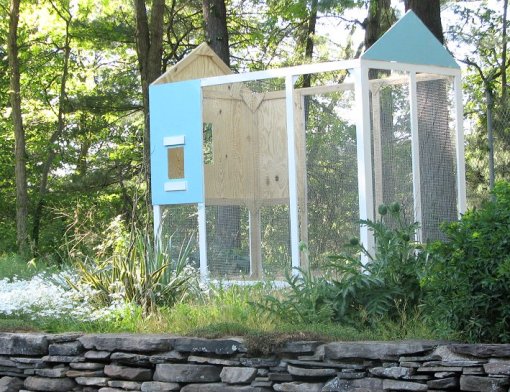Our raised beds warm up pretty fast, and I was able to plant Maxigolt peas today. Of course, we are just about to enter Mud Season here in New Enlgand and a Nor’ Easter is on the way tomorrow, but I planted them anyway! Last weekend I started seeds; Redbor kale, Mizuna mustard grrens, Bright Lights chard and Sessantina broccoli raab.
February 28, 2009
February 21, 2009
Recently Kathy mentioned that she has been toying with the idea of having chickens, but she has some hesitations, so this post is for her and hopefully anyone else intrigued by the idea of a small flock of chickens in your urban or suburban backyard… (more…)
October 16, 2008
The legendary Angie (a.k.a. “Miss Prissy” on the Backyard Chicken Forum) has asked me to blog about our chickens…I feel a little aprehensive about this because we have had our girls for only four months and I know way more about sewing than I do about chickens. Miz P, on the other hand, lives on a working farm with about 100 chickens (and much more livestock) and she is about as self-sufficient as a family can possibly be. This is a woman who could have crossed the Great Plains in a Conestoga wagon with a gaggle of children, a husband, extended family and livestock in tow with one hand tied behind her back.
So I’ll do the best I can with an update on our three girls. My daughter Emma wishes they were still wee chicks, but they have grown up into lovely ladies nonetheless.
Waddle is a Buff Orpington; she’s at the top of the pecking order. She’s the chicken with the MBA; John calls her the “thought leader” – she is always the first to check out something new and she has always been the calmest, friendliest and the most tame. She is very curious, self confident and always the first out of the coop in the morning.
K.J. is the Australorp, she’s #2 and is constantly challenging Waddle’s position as Top Hen. K.J. is also the largest and heaviest; she is the first one to sound the alarm when they free range; her wariness reminds of the wild turkeys that come through our yard. She seems to be the one who is maturing first, so we shall see if she lays first.
Hippie Chick is an Easter Egger. She has always been a loner who doesn’t like to be touched, but she does like company. The only time she’ll make an exception is when I visit them right as they are falling asleep. Then she will let me stroke her chest while she roosts. She has muffs, a beard and lush hawk-like feathering on her head and neck and greenish-black tail feathers.
One thing I love about chickens is their social hierarchy, which is complex and fascinating to observe. So far we’ve had no real problems; they get along pretty well save for the occasional mano-a-mano “You talkin’ to ME?” showdowns when they free range. The everyday bird comedy is endlessly hilarious. They will be four months old November 16 – and the egg countdown has begun.
August 17, 2008
We had a lot of rain this summer, so it took a while to get the final painting done on the coop. The stones around the bottom are just an extra critter deterent in addtion to the 12 inches ofhardware cloth that extends into the run. Emmi painted a rock that we use as a doorstop when we open up the coop to let them free range (always supervised, we have hawks.) They love to free rnage because they can scratch to theri hearts content. We also picked out first watermleon this week – and it came in at 30 lbs! Somehow the five of us managed to eat it all within two days. The chicks were 8 weeks old as of yesterday, and the three of them are losing their cheepy chick voices and acquiring their hen voices.
August 1, 2008
July 29, 2008
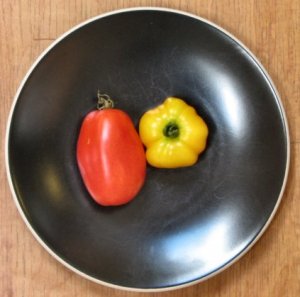 A Roma on the left, and a Marvel Striped on the right. The Roma came form Lowes to replace a Cherokee Purple that was mysterioslu brokne off at ground elvel, and I think it went into the ground June 1. Roma’s are 76 days so it’s way ahead. Marvel Striped (started from seed April12) was planted May 17; it’s 90 days and also ahead of schedule. I suspect this may be due to the Trex raised beds being so warm. This Marvel Striped was at the very bottom of the vine, most of its still-to-ripen-relatives are MUCH larger.
A Roma on the left, and a Marvel Striped on the right. The Roma came form Lowes to replace a Cherokee Purple that was mysterioslu brokne off at ground elvel, and I think it went into the ground June 1. Roma’s are 76 days so it’s way ahead. Marvel Striped (started from seed April12) was planted May 17; it’s 90 days and also ahead of schedule. I suspect this may be due to the Trex raised beds being so warm. This Marvel Striped was at the very bottom of the vine, most of its still-to-ripen-relatives are MUCH larger.
July 19, 2008
Big Doings in Small Spaces
Posted by phyllisc under Chickens, Garden Structures, Greens, Tomatoes[6] Comments
Our potager-style vegetable garden is coming into it’s own. Summer of 2008 has been just about a perfect garden year – the weather has been beautiful, warm but not humid and we’ve had plenty of rain. Of course, with garden there are always high and lows, oftenat the same time.  The lone tomatillo I planted hasn’t had any fruit, and some of the tomatoes are showing signs of blosson end rot. But then again, the watemelon is amazing, and we even have decroative white mini pumpkins growing that I never even seeded! We bought a bag as Thanskgiving decoration at Costco and threw them onto the front bed to compost. Well, of course over a dozen of them sprouted! So I kep the biggest one going, and you can see it in the same bed as the watermelon vines. We have more veggies than we can even eat!
The lone tomatillo I planted hasn’t had any fruit, and some of the tomatoes are showing signs of blosson end rot. But then again, the watemelon is amazing, and we even have decroative white mini pumpkins growing that I never even seeded! We bought a bag as Thanskgiving decoration at Costco and threw them onto the front bed to compost. Well, of course over a dozen of them sprouted! So I kep the biggest one going, and you can see it in the same bed as the watermelon vines. We have more veggies than we can even eat!
The chicken coop is finally finshed and we have our permit from Westwood. The coop design is the well known Playhouse Coop. It’s just the right size for 3-4 chickens. We have three, 1 Buff Orpington, 1 Autralorp, and 1 Easter Egger. The first will lay lay brown eggs, and the Easter Egger lays a blue or green egg. They’re 4 weeks old this week, and still a few months away from laying.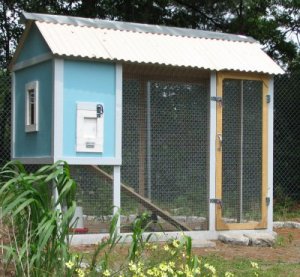
One nice surprise this year are the watermeloms; they’re growing on the front steps. That’s by far the warmest spot around our house due to the south facing windows and the hard surfaces. The watermelons seem pretty happy there. The vines are just growing all over the place and osme of them are more than 15 feet long. 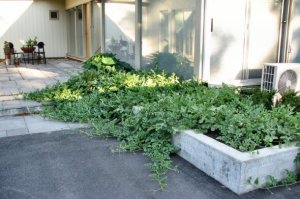
 Next year we will have to crop rotate, so we might actually goew these in the front yard under some ornamental grasses that get pretty tall. Or we might put them were you see the tomatoes, and plant giant sunflowers behind them as a livng screen because the tomatoes will need to go into a different bed as well.
Next year we will have to crop rotate, so we might actually goew these in the front yard under some ornamental grasses that get pretty tall. Or we might put them were you see the tomatoes, and plant giant sunflowers behind them as a livng screen because the tomatoes will need to go into a different bed as well.
May 25, 2008
Good progress was made today on the chicken coop; and John did allof the work, although I did manage to get the painting started. This is the well-known Playhouse Coop and the only major change we made will be to use Tuftex corrugated opaque vinyl panels for the roof instead of a standing metal seam roof, which I could not find anywhere in such a small quantity. In the end everything pretty much came from Lowes.
John said the most annoying part of the job is stapling the hardware cloth onto the frames. I helped him while he put it together, and this can definitely be made by one or two people with maybe advanced intermediate wood working skills.
Sorry for all the weeds! This part of our yard looks pretty bad right now; we let to go to seed while we were doing other renovations, and now that the coop is here I’ll have to focus on this area again.
I think I really want a metal sign for the coop door that says “Coop du Jour” !
April 26, 2008
Peter’s Perfect Tomatoes
Posted by phyllisc under Tomatoes | Tags: vegtable gardening |Leave a Comment
The husband of a friend of mine is a serious gardener with years and years of experience, and I always use his transplant method for tomatoes. This formala is like a Cook’s Illustrated recipe – just do exactly what it says, don’t deviate from the plan, and you’ll get a great result.
Peter’s Perfect Tomatoes
When you transplant into your garden do the following:
- Dig a hole as deep as the seedling height and twice as wide as widest set of leaves.
- Fill the hole 1/2 way with a 50/50 combination of peat moss and composted manure.
- Water the mix and make a thick mud. The water should contain a transplant fertilizer (organic or chemical – your choice)
- Plant the seedling in the mud and bury it past the original seedling leaves. The tomato will sprout new roots from the buried stem.
- Water as required for the rest of the summer but do not fertilize again – the tomato has everything it will need for the entire season.
Your tomatoes will go gangbusters – trust me! Heirlooms in particular really like it.
